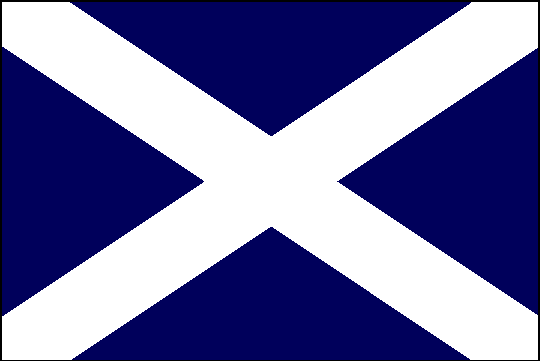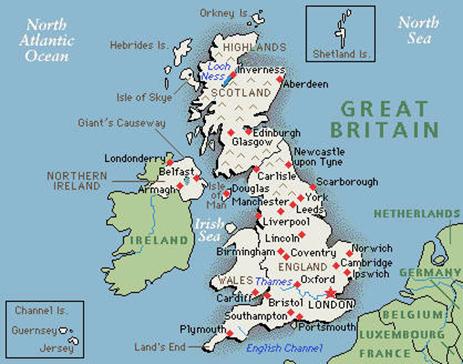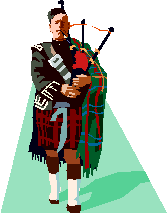
Рефераты по рекламе
Рефераты по философии
Рефераты по финансам
Рефераты по химии
Рефераты по цифровым устройствам
Рефераты по экологическому праву
Рефераты по экономико-математическому моделированию
Рефераты по экономической географии
Рефераты по экономической теории
Рефераты по этике
Рефераты по юриспруденции
Рефераты по языковедению
Рефераты по юридическим наукам
Рефераты по истории
Рефераты по компьютерным наукам
Рефераты по медицинским наукам
Рефераты по финансовым наукам
Рефераты по управленческим наукам
Рефераты по строительным наукам
Психология педагогика
Промышленность производство
Биология и химия
Языкознание филология
Издательское дело и полиграфия
Рефераты по краеведению и этнографии
Рефераты по религии и мифологии
Рефераты по медицине
Рефераты по сексологии
Рефераты по москвоведению
Рефераты по экологии
Краткое содержание произведений
Рефераты по физкультуре и спорту
Топики по английскому языку
Рефераты по математике
Рефераты по музыке
Остальные рефераты
Топик: SCOTLAND
Топик: SCOTLAND


By: Alexey Kapitskiy
School № 1264
GRADE 10 “C”
Moscow
2003, May
Table of Contents:
1. Geographical Situation
2. The Land And Resources
3. Physiographic Regions
4. Rivers and Lakes
5. Climate
6. Plant and Animal Life
7. Natural Resources
8. Population
9. Population Characteristics
10. Principal Cities
11. Religion and Language
12. Education
13. Elementary and Secondary Schools
14. Universities and Collages
15. Government
16. Central Government
17. Legislature
18. Judiciary
19. Local Government and Political Parties
20. Economy
21. Agriculture
22. Forestry and Fishing
23. Mining and Manufacturing
24. Transportation and Communications
|
Scotland, administrative division of the kingdom of Great Britain, occupying the northern third of the island of Great Britain. Scotland is bounded on the north by the Atlantic Ocean; on the east by the North Sea; on the southeast by England; on the south by Solway Firth, which partly separates it from England, and by the Irish Sea; and on the west by North Channel, which separates it from Ireland, and by the Atlantic Ocean. As a geopolitical entity Scotland includes 186 nearby islands, a majority of which are contained in three groups—namely, the Hebrides, also known as the Western Islands, situated off the western coast; the Orkney Islands, situated off the northeastern coast; and the Shetland Islands, situated northeast of the Orkney Islands. The largest of the other islands is the Island of Arran. The area, including the islands, is 78,772 sq km (30,414 sq mi). Edinburgh (population, 1991, 421,213) is the capital of Scotland as well as a major industrial area and seaport. The Land and Resources Scotland has a very irregular coastline. The western coast in particular is deeply penetrated by numerous arms of the sea, most of which are narrow submerged valleys, known locally as sea lochs, and by a number of broad indentations, generally called firths. The principal firths are the Firth of Lorne, the Firth of Clyde, and Solway Firth. The major indentations on the eastern coast are Dornoch Firth, Moray Firth, the Firth of Tay, and the Firth of Forth. Measured around the various firths and lochs, the coastline of Scotland is about 3700 km (about 2300 mi) long. Physiographic Regions The terrain of Scotland is predominantly mountainous but may be divided into three distinct regions, from north to south: the Highlands, the Central Lowlands, and the Southern Uplands. More than one-half of the surfaces of Scotland are occupied by the Highlands, the most rugged region on the island of Great Britain. Consisting of parallel mountain chains with a general northeastern-southwestern trend and broken by deep ravines and valleys, the Highlands are noted for their scenic grandeur. Precipitous cliffs, moorland plateaus, mountain lakes, sea lochs, swift-flowing streams, and dense thickets are common to the Highlands, the most sparsely inhabited section of Scotland. The region is divided in two by a depression, known as the Glen More, or Great Glen, which extends from Moray Firth to Loch Linnhe. To the northwest of this lie heavily eroded peaks with fairly uniform elevations ranging from 610 to 915 m (about 2000 to 3000 ft). In the Highlands southeast of the Great Glen the topography is highly diversified. This region is traversed by the Grampian Mountains, the principal mountain system of Scotland. The highest peak of the Grampians is Ben Nevis (1343 m/4406 ft), the highest summit in Great Britain. To the south of the Highlands lies the Central Lowlands, a narrow belt comprising only about one-tenth of the area of Scotland, but containing the majority of the country's population. The Central Lowlands are traversed by several chains of hills, including the Ochil and Sidlaw hills, and by several important rivers, notably the Clyde, Forth, and Tay. The terrain of the Southern Uplands, a region much less elevated and rugged than the Highlands, consists largely of a moorland plateau traversed by rolling valleys and broken by mountainous outcroppings. Only a few summits in the Southern Uplands exceed 762 m (2500 ft) in elevation, the highest being Merrick (843 m/2765 ft) in the southwest. Adjoining the Southern Uplands region along the boundary with England are the Cheviot Hills. Rivers and Lakes Scotland is characterized by an abundance of streams and lakes (lochs). Notable among the lakes, which are especially numerous in the central and northern regions, are Loch Lomond (the largest), Loch Ness, Loch Tay, and Loch Katrine. Many of the rivers of Scotland, in particular the rivers in the west, are short, torrential streams, generally of little commercial importance. The longest river of Scotland is the Tay; the Clyde, however, is the principal navigational stream, site of the port of Glasgow. Other chief rivers include the Forth, Tweed, Dee, and Spay. Climate Like the climate of the rest of Great Britain, that of Scotland is subject to the moderating influences of the surrounding seas. As a result of these influences, extreme seasonal variations are rare, and temperate winters and cool summers are the outstanding climatic features. Low temperatures, however, are common during the winter season in the mountainous districts of the interior. In the western coastal region, which is subject to the moderating effects of the Gulf Stream, conditions are somewhat milder than in the east. The average January temperature of the eastern coastal region is 3.9 C (39 F), and the average January temperature of the western coastal region is 3.њ C (37.5 F); corresponding July averages are 13.8 C (56.8 F) and 15 C (59 F). The average January and July temperatures for the city of Edinburgh are 3.5 C (38 F) and 14.5 C (58 F), respectively. Precipitation, which is marked by regional variations, ranges from about 3810 mm (about 150 in) annually in the western Highlands to about 635 mm (about 25 in) annually in certain eastern areas. Plant and Animal Life The most common species of trees indigenous to Scotland are oak and conifers—chiefly fir, pine, and larch. Large forested areas, however, are rare, and the only important woodlands are in the southern and eastern Highlands. Except in these wooded areas, vegetation in the elevated regions consists largely of heather, ferns, mosses, and grasses. Saxifrage, mountain willow, and other types of alpine and arctic flora occur at elevations above 610 m (2000 ft). Practically all of the cultivated plants of Scotland were imported from America and the European continent. The only large indigenous mammal in Scotland is the deer. Both the red deer and the roe deer are found, but the red deer, whose habitat is the Highlands, is by far the more abundant of the two species. Other indigenous mammals are the hare, rabbit, otter, ermine, pine marten, and wildcat. Game birds include grouse, blackcock, ptarmigan, and waterfowl. The few predatory birds include the kite, osprey, and golden eagle. Scotland is famous for the salmon and trout that abound in its streams and lakes. Many species of fish, including cod, haddock, herring, and various types of shellfish, are found in the coastal waters. Natural Resources Scotland, like the rest of the island of Great Britain, has significant reserves of coal. It also possesses large deposits of zinc, chiefly in the south. The soil is generally rocky and infertile, except for that of the Central Lowlands. Northern Scotland has great hydroelectric power potential and contains Great Britain's largest hydroelectric generating stations. Beginning in the late 1970s, offshore oil deposits in the North Sea became an important part of the Scottish economy. Population The people of Scotland, like those of Great Britain in general, are descendants of various racial stocks, including the Picts, Celts, Scandinavians, and Romans. Scotland is a mixed rural-industrial society. Scots divide themselves into Highlanders, who consider themselves of purer Celtic blood and retain a stronger feeling of the clan, and Lowlanders, who are largely of Teutonic blood. Population Characteristics The population of Scotland was (1991 preliminary) 4,957,289. The population density was about 64 persons per sq km (167 per sq mi). The highest density is in the Central Lowlands, where nearly three-quarters of the Scots live, and the lowest is in the Highlands. About two-thirds of the populations are urban dwellers. Principal Cities The most populous city in Scotland (654,542) is Glasgow. The conurbation of Clydeside, which includes the cities of Glasgow and Clydebank, is the largest shipbuilding and marine engineering center in Great Britain. Other important industrial cities are Dundee (165,548) and Aberdeen (201,099). Religion and Language The Church of Scotland, a Presbyterian denomination, is the official state church. The Roman Catholic church is second in importance. Other leading denominations are the Episcopal Church in Scotland, Congregationalist, Baptist, Methodist, and Unitarian. Jews are a small minority. English is generally spoken; fewer than 100,000 Scots (mainly inhabitants of the Highlands and island groups) also speak the Scottish form of Gaelic. Education Schools in Scotland are administered by the Scottish Education Department and by local education authorities. Elementary and Secondary Schools In the mid-1980s some 879,000 pupils were attending publicly maintained schools and about 31,900 were in private schools. The transfer from elementary to secondary schools generally takes place at the age of 12. For a discussion on specialized schools. Universities and Colleges
Scotland has about 66 institutions providing programs of study beyond the secondary level for those students who do not go on to the universities. These include colleges of agriculture, art, commerce, and science, and in the mid-1980s the total enrollment was more than 81,000. Teacher-training colleges numbered seven, with approximately 3000 students. Of the eight universities in Scotland, the oldest (University of Aberdeen, University of Edinburgh, University of Glasgow, and University of St. Andrews) were founded in the 15th and 16th centuries. Four universities have received their charters since 1960. Total university enrollment was about 43,100 in the early 1980s. Culture Clans, the
traditional keystone of Scottish society, are no longer powerful. Originally,
the clan, a grouping of an entire family with one head, or laird, was also
important as a fighting unit. The solidarity associated with clan membership
has been expanded into a strong national pride. The Puritan zeal of Scottish
Presbyterianism, which is traceable to John Knox, the 16th-century religious reformer
and statesman, is also strong. Popular sports of Scottish origin include
curling and golf. Bagpipes, usually associated with Scottish music, were
probably introduced by the Romans, who acquired them in the Middle East.
Scottish music is noted for the wide use of a five-tone, or pentatonic,
scale. Folk tunes are not standardized, and a single song may have hundreds
of variations in lyrics and music. Government Scotland is governed as an integral part of Great Britain. It is represented by 72 members in the House of Commons and by 16 Scottish peers in the House of Lords. Central Government Scottish affairs are administered by a British cabinet ministry, headed by the secretary of state for Scotland. The statutory functions of the secretary of state are discharged by five main departments of equal status: the Department of Agriculture and Fisheries for Scotland, the Scottish Development Department, the Scottish Education Department, the Scottish Home and Health Department, and the Industry Department for Scotland. Each is administered by a secretary who is responsible to the secretary of state. The routine administration of the department’s proceeds from Edinburgh, but each department has representatives in London, where they perform liaison and parliamentary duties. Legislature Before the union of Scotland and England in 1707, Scotland had developed its own system of law, which continued after the union. The Scottish law system is based on civil law, which is derived from ancient Roman law, whereas the other parts of Great Britain follow the common law, which originated in England with the evolution of case law and precedents. Because of the different systems of law, separate statutes or statutory provisions often are enacted by Parliament for application in Scotland. Any statute must state expressly or imply that it is applicable to Scotland in order to become enforceable. Judiciary The Scottish judiciary is organized separately from that of the rest of Great Britain. The two higher courts of Scotland are the High Court of Justiciary (criminal) and the Court of Session (civil). A panel of 21 judges is provided for both courts together. Major criminal trials are held before 1 or 2 judges of the High Court of Justiciary and a 15-member jury; criminal appeals may be heard by a bench of at least 3 judges. The Court of Session is divided into an Outer House, which holds all divorce trials and the more important civil trials, and an Inner House, which functions chiefly as an appellate court in civil cases. Appeals to the British House of Lords may be made from the Court of Session; appellate judgments of the High Court of Justiciary are final. Each of the six sheriff domes, into which Scotland is divided, has a sheriff court for less important civil and criminal cases. Petty cases are tried by police courts and justices of the peace. Local Government and Political Parties The Scottish Development Department is responsible for general policy in regard to local government. A reorganization of local government in Scotland was made effective in 1975, when the counties and burghs were abolished and replaced by nine regions and three island areas. The regions (but not the island areas) are divided into districts. Each of these units is administered by a council, whose members are elected to 4-year terms. The island areas, numbering some 700 islands and islets to the north and west, the regions, and the former counties, all of which are described in separate articles, are listed in the accompanying table. Two leading British parties, the Conservative Party and the Labor Party, have shared Scottish seats in Parliament about equally since the 1920s. The Scottish Nationalist Party, which was founded in 1927 in order to press for complete self-government, has played a minor role in the politics of the country. Economy Many aspects of the economy of Scotland are covered in the article on Great Britain. The currency of Great Britain is the legal tender of Scotland. Both agriculture and industry are important in the economy of Scotland. The chief exports are petroleum and natural gas and manufactured goods, especially burlap, clothing, machinery, textiles, and whiskey. The chief imports are food and iron. The center of Scottish trade unionism is the Scottish Trades Union Congress, with an affiliated membership of more than 980,000. Agriculture More than three-fourths of the land is used for agriculture; approximately equal areas are devoted to farming and grazing. The most important crops are wheat, oats, and potatoes. Other crops include barley, turnips, and fruit. Livestock and livestock products are also of major importance. Sheep are raised in both the Highlands and island groups and the Southern Uplands. Scotland is also known for its beef and dairy cattle and for its dairy products.
Forestry and Fishing About 607,000 hectares (about 1.5 million acres) of Scotland is forested, 60 percent of which is publicly owned. In Scotland fishing is more important than forestry. The principal fishing ports are Aberdeen, Peterhead, Fraserburgh, and Lerwick. The catch consists mainly of whitefish, herring, crabs, and lobsters. Mining and Manufacturing Coal is the chief mineral wealth, and the industry is nationalized. Nearly all the major coal deposits are found in the Central Lowlands. Limestone, clay, and silica are also mined. Iron ores and other metals have been virtually exhausted. North Sea petroleum and natural gas are sent by pipeline to points in the Orkney and Shetland islands and to the mainland. Major oil refineries are located at Grangemouth and Dundee. About 36 percent of the labor force is employed in manufacturing. Shipbuilding, steelmaking, and the manufacture of electronic items are major industries and are concentrated in the region surrounding Glasgow. Other important manufactures include woolen textiles and yarn, chemicals, machinery of many varieties, vehicles, and whiskey.
Transportation and Communications About 48,000 km (about 30,000 mi) of highways and about 6400 km (about 4000 mi) of railroads serve Scotland. Public buses provide transportation throughout most of the country, and many transatlantic flights use Prestwick Airport near Glasgow. Most radio and television programs originate in England. About 17 daily newspapers and 120 weeklies are published in the country. Questions to the text: 1. What are the three groups of Scottish islands? 2. What are the principal firths of Scotland? 3. How long is Scottish coastline? 4. Into what regions Scotland may be divided? 5. What is the highest peak in Scotland and what is its height? 6. What river is considered the main navigation stream in Scotland? 7. What is average July temperature of the West Coastal region? 8. What are the most common species of conifers in Scotland? 9. Where in Scotland the soil is more fertile then anywhere else (in Scotland)? 10. What population groups Scots divide themselves into? 11. What is the population of the Scotland’s most populous city? 12. In what century Scotland’s oldest universities where built and what are they? 13. How many tones are used in Scottish music? 14. What and how many departments exist in Scottish government? 15. Before whom major criminal trials are held? 16. In what year Scottish political parties began having equal number of seats in Scottish Government, and what are they? 17. What are the chief exports and imports of Scotland? 18. Name the approximate percent of the Scottish land devoted to agriculture? 19. Name the principal fishing ports of Scotland? 20. Where are located Scotland’s main oil refineries? |



